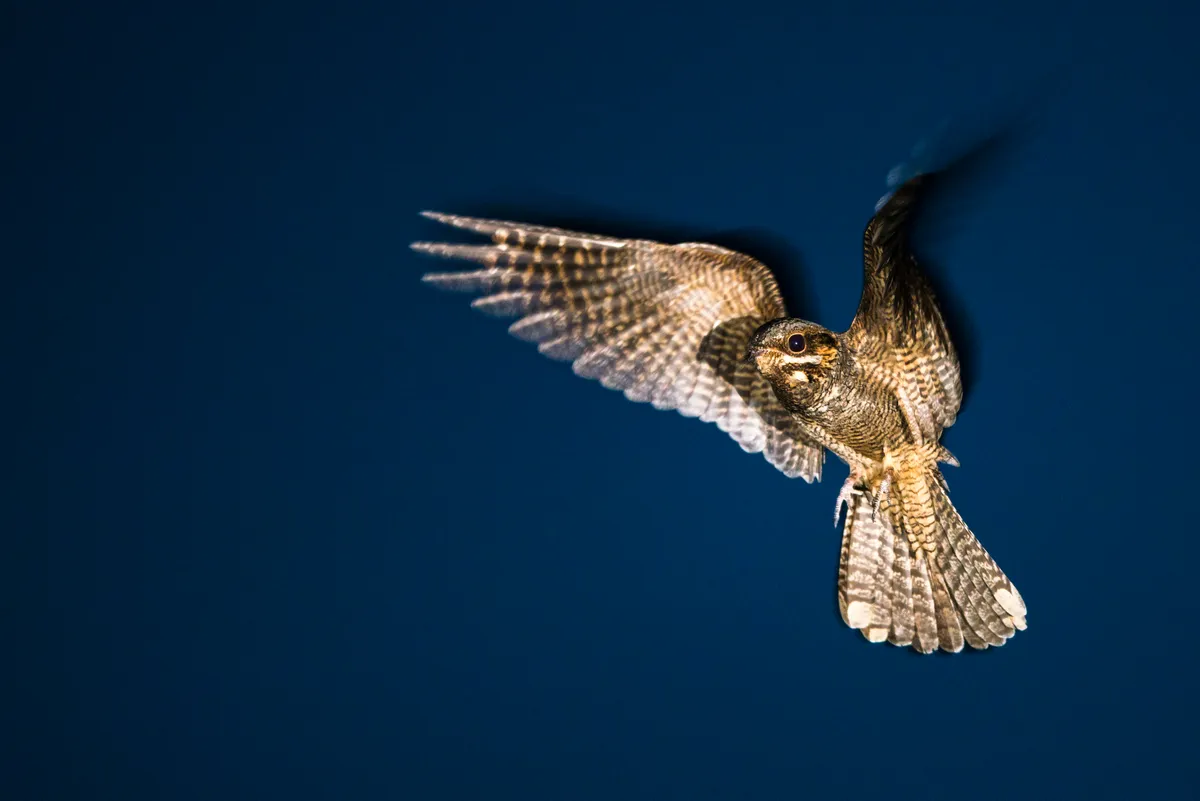After travelling thousands of miles from their wintering grounds in Africa, nightjars reach Britain’s heaths and forests in spring, ready to mate.
Walk at dusk for a chance of spotting one.

Guide to nightjars, including how to identify them, why they are so rare and where you can see them.
How to identify nightjars
The nightjar is a medium-sized bird, with bark-coloured plumage, a pointed tail and flat head. Males have white patches on their wings and tail tips. They eat moths, flies and beetles.
During the spring mating season, the males have a particular way of attracting a match – wing-clapping – while rivals can also be glimpsed performing frantic display fights.
Nightjars hunt on the move and have a distinctive silhouette, their pointed wings and long tails calling to mind a kestrel or cuckoo. But to look at, they seem almost dragon-like, with reptilian eyes and grey-brown plumage that is part moth, part tree-bark, part lizard.
It is almost impossible to describe the churring of the nightjar. An insistent, eerie noise, somewhere between electronic, insect and the sonar of dolphins.

Nightjar habitat and distribution
Nightjars can be seen in open conifer woodland, heathland and moorland, specifically in southern England and Suffolk, parts of Wales and south-west Scotland.
RSPB Blean Woods in Kent is one of the species’ favourite spots, covering 509 hectares to the north-west of Canterbury. Visit in mid-May for the return of the nightjars, when the mixed-broadleaf trees mist with green, and wood anemones, bluebells and wood sorrel carpet the ground.
Related articles

Nightjar folklore and myth
With their silent flight and that uncanny call, it is no wonder that nightjars are a magnet for myth. In both Africa and Europe, nightjars have a reputation for stealing the milk of goats, not least because they are often to be found near livestock. In reality, of course, they are feasting on swarms of insects.

When is the best time to see nightjars?
Nightjars can be found in Britain’s heaths and forests in spring, ready to mate. Walk at dusk for a chance of spotting one. These birds are crepuscular – which means they’re at their most active in low light – it might be your only clue that one is nearby.
Nightjars don’t hang around after breeding. By mid-August, they will have started on their epic journey home.
